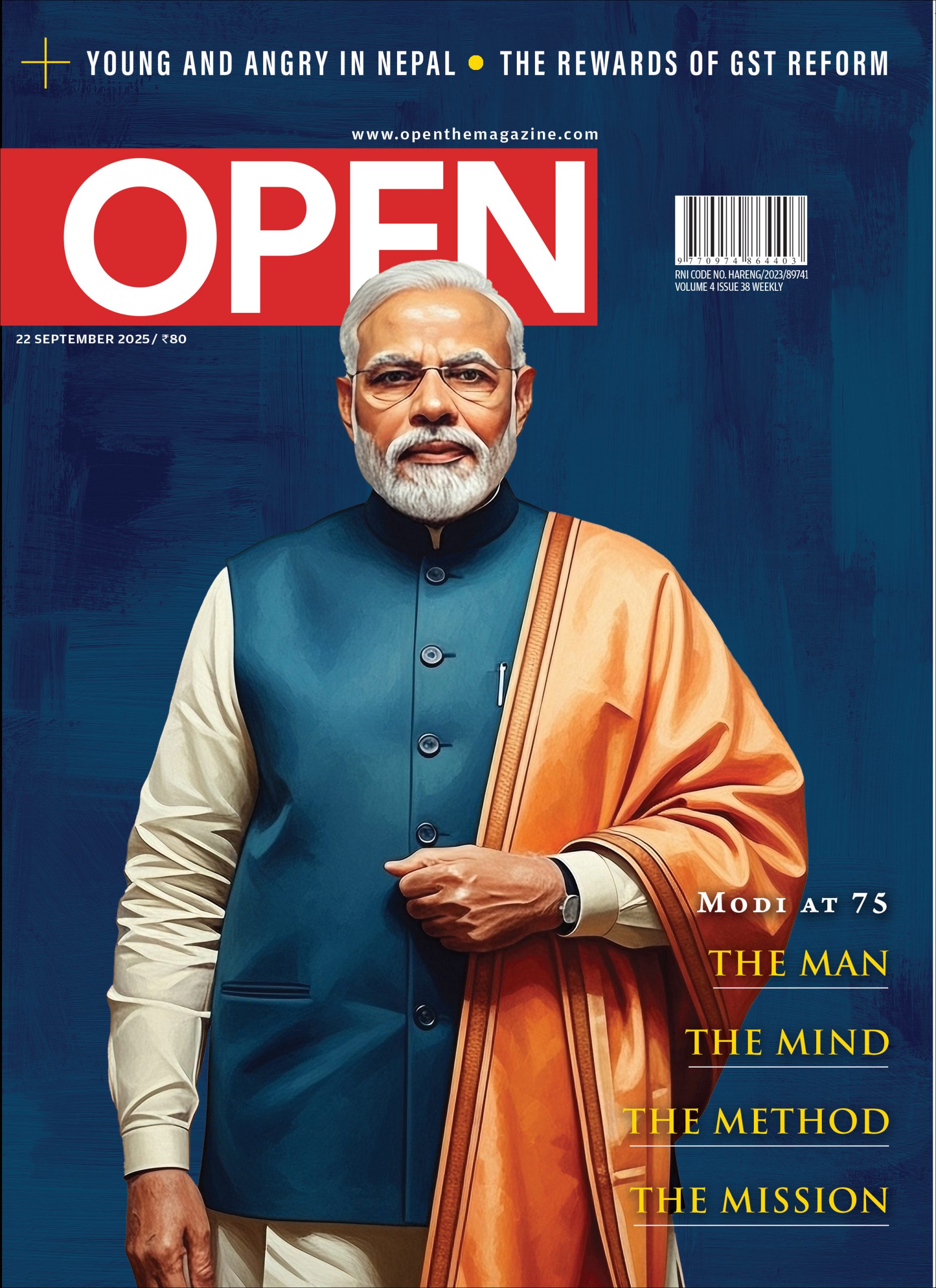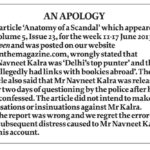RIGHT OF PASSAGE
Modi’s little reforms that make a big ideological statement—and all those endangered sacred cows
/wp-content/uploads/2015/11/Rightofpassage-main.jpg)
Modi’s little reforms that make a big ideological statement—and all those endangered sacred cows
THE LECTERN THUMPERS of Indian industry rooting for big-bang reforms to reboot the economy did not reach for their vuvuzelas when Finance Minister Arun Jaitley presented the NDA Government’s first Budget. After its electoral landslide, expectations were soaring high that Prime Minister Narendra Modi would have his Finance Minister unfurl radical measures that would work miracles overnight. It was barely weeks after the Government had taken charge, but doomsayers had already pronounced their verdict: they were disappointed.
However, tell-tale signs have been emerging that the economy is making a significant and calculated shift northward after its prolonged slump under the UPA II’s reign. For those keen on joining the dots, the macro picture is becoming clear: the Modi Government has cleared the way for a calibrated gearshift.
Global credit rating agencies like Fitch have upped their projections of India’s GDP growth for 2015-16. Quietly, PSU chips have started making gains on the stock market, fired by the confidence that Prime Minister Modi means business. This recovery has been attributed to the certainty that this regime would effect a decisive economic turnaround, with the manufacturing and infrastructure sectors at its core.
That sense of confidence is reflected elsewhere as well. Fresh from its success at the BRICS meet, India dug its heels in to defend its right to hold large foodgrain stocks and retain its food subsidies at the pre-Bali WTO meet in Australia. At the risk of irking the US, which doles out huge subsidies to its farm sector annually even though the sector contributes only 1 per cent to its GDP, Modi’s men refused to yield to pressure on updating the 1986 prices used to calculate India’s permissible food subsidy level. Suddenly, India had found its voice in the global arena. A disappointed Washington DC, archly accusing India of trying to upset a virtually pre-determined Bali agreement, was forced to acknowledge India’s concerns. With time until 2017 to clinch a food subsidy agreement at the WTO, India will now push for a revised deal on its own terms.
It was an example of Prime Minister Modi’s strategy to leverage the country’s position as one of the world’s top 10 economies in order to defend and promote India’s interests. Aware that the farm sector would have to move towards liberalisation, Modi has made it clear he will not give a quarter without ensuring that the sector gets back a quarter in equal measure.
In another adept move, Jaitley opened up the defence sector in his Budget to foreign investment, carefully capping the FDI limit at 49 per cent, as a measure to boost domestic manufacturing and capabilities. Within weeks of that, the Government has also quietly managed to reopen the acutely challenging issue of reforming India’s archaic labour laws. “Narendra Modi is an astute politician who is extremely aware of the socio-economic complexities of our country. He is acutely conscious of the unfolding economic tapestry and the need to weave its warp and weft with care at this juncture. He is aware that radical economic reforms cannot be brought in with a bang in our society without sensitively managing the politics of it. He believes in controlling the pace of economic reforms and calibrating its content appropriately,” says a senior member of the Cabinet who knows Modi and his style of functioning.
Modi was following a government tradition in economic policy making, one that goes back two-and-a- half decades to the time India made its initial moves of economic liberalisation, shifting away from its socialist, protectionist and import-substitution oriented growth strategy to a New Economic Policy that would let market competition lead the economy’s expansion.
That was 1991, the year after Saddam Hussein’s Iraq invaded Kuwait and threw fuel-price economics across the world into a tizzy; India saw winding queues of vehicles lined up outside petrol pumps, even as the high cost of crude oil imports depleted the country’s foreign exchange reserves and forced the country to near bankruptcy. It was a red-letter year in another way as well: the Soviet Union, which had inspired India’s centrally planned economy, was collapsing and the virtues of the market economy were becoming apparent. On the precipice of a debt default, India appeared to have little option but to undertake a Structural Adjustment Programme (SAP) that would make the country eligible for a bailout package from the International Monetary Fund (IMF) and World Bank.
In July 1991, the Congress government of PV Narasimha Rao announced what has been described as ‘the most radical programme of economic liberalisation in independent India’s history’. Industrial licensing was abolished along with many other restraints on business, and foreign investment invited into several sectors; within weeks, the Centre had outlined a switch to an export-oriented growth strategy that drew on market forces. The then Finance Minister Manmohan Singh also had to devalue the rupee, slash food and fertiliser subsidies, and take other hard decisions that would have left the old guard aghast. All of this needed the backing of the Congress Working Committee. Prime Minister Rao took the reform blueprint to his party’s apex decision-making body, which was packed with status quoists and socialists of Nehruvian persuasion. Most of them were outraged by Rao’s prescription to overcome the economic crisis. Arjun Singh, one of the pretenders to the PM’s post, saw it as an opportunity to take on Rao directly. With the help of party colleague ML Fotedar, he led the apparently socialist charge against Rao’s proposal, protesting that it would deal a body blow to Jawaharlal Nehru’s legacy. The CWC meeting was inconclusive. It decided to meet after a few days to take up the discussion again.
A skilled politician, Rao knew the Indian as much as Congress mindset better than anyone in the CWC. He asked his advisors to rephrase the paper on reforms. “The paper should argue that it is aimed at India’s achieving the goal of self reliance,” he told his men. It worked. At the next meeting, the CWC okayed the New Economic Programme.
That marked the start of the aforementioned tradition of reforming the economy by stealth. A week later, Singh presented his budget. There were loud protests within the party over it, and a CWC meeting was convened for an explanation. Rao advised Singh to take a copy of the election manifesto prepared by former PM and party president Rajiv Gandhi to the meeting: “You read out from the manifesto. It has enough in it to explain our current position.” Singh did exactly that, speaking of promises made by the departed leader. It worked like a dream. And by the end of 1991, India had its bailout.
Successive years saw governments of various shades borrowing from Rao’s book to sell reforms to a reluctant political class.
Twenty-three years later, as the country faced an election this May, there were expectations in some quarters that the new regime could pull off a PV Narasimha Rao redux. On 17 May, a well-known banker who frequents seminars approached a top BJP leader to share his prescription for pitchforking the economy out of the current morass. During the run up to the election, newspapers and TV channels were speculating that he would occupy a plum post in the new government. “We don’t need any blueprints at this stage. As and when we need expert advice, we will seek it,” the BJP leader told the banker, and the short call ended. Not one to give up, the banker then placed a call to Narendra Modi, only to be told politely but firmly that the BJP leader was right and that political leaders would decide how to steer the economy. Expert advice could be sought only after that, once the revival plan was worked out.
The banker’s blueprint to reboot the economy contained radical suggestions that would slaughter virtually every ‘holy cow’ in the sector, from labour laws to FDI across sectors. Besides a radical hike in FDI limits in varied sectors, and a sharp pruning of the subsidy bill, possibly in the first year of the regime’s term, it wanted the private sector to take over the ‘commanding heights’ of the economy. The idea was to unleash ‘animal spirits’. Says a senior party man privy to the conversation: “Modi is a consummate politician who has immense faith in market forces and he is equally aware that a welfare state has heavy limitations in its ability to meet the aspirational demands of a fast growing India. But he is as acutely aware of the need to trim the sails of his ship to suit the social and political winds of a very complex nation.” Modi, he says, prefers to push significant but well-phased reforms. “Slow and steady wins the race,” says the BJP leader.
That is a view forcefully echoed by Jaitley, who is effectively the regime’s second-in-command. In conversation with Open, Jaitley says the Government has to be mindful of public and political opinion. “Economic reforms measures have to be calibrated and considered. There is no room for complacency. There is no room for a big bang reforms scenario that could potentially trigger social and economic besides political confrontations.”
His budget announced a right turn for the economy: the private sector was made a critical partner, government spending was reordered by transferring power and funds to states, the Planning Commission assumed a smaller role, the foundations of a digital economy were laid, and job creation was prioritised by fostering entrepreneurship. This sent out a clear signal that the Government was confident that a further liberalised market economy held the potential to solve India’s problems despite its old socialist moorings. His budget also committed itself to a higher FDI limit in insurance (apart from defence), and signalled a record programme of PSU disinvestment. But self- styled advisors of the Government, who operate mostly via TV studios and the opinion pages of newspapers, went ballistic expressing their disappointment over various aspects of the Budget.
For the past 10 years, India has had no FDI in defence, some carped; hiking the cap from 26 to 49 per cent will not make India a hub of defence manufacturing; it will not create jobs. Why, asked others, did the Finance Minister not allow 49 per cent FDI in the insurance sector through the automatic route?
For his part, Jaitley maintains that the decision to raise the FDI limit in the defence sector to 49 per cent was a ‘significant step’ in establishing an indigenous military industry. “Our assessment of the market is that the 49 per cent FDI [move] is a significant step. Public opinion and Parliament’s opinion in India [are] ready to accept the proposal I have made. Other, more radical economic proposals may be more controversial to society and polity alike.”
The fear of reproach has not stopped the Government from approving changes to key laws, including the Factories Act, Apprenticeship Act and Labour Law. “This is a priority in order to extricate the economy from the era of jobless growth through a considered strategy,” says a Finance Ministry official. Only five million jobs were created between 2004- 05 and 2011-12, even while another 30 million plus dropped out of agriculture and related labour activities and swelled the unorganised sector areas such as construction. The Government is intent on an intelligent mix of pro-labour and pro- industry changes. The agenda includes standardising minimum wages, lifting limits on night shifts for women while making security mandatory, barring pregnant women from handling machinery and underage children from the workspace, and dropping a provision that allowed employers not following the apprenticeship law to be jailed. Crucially, however, these changes—in which states are given a big role—are set to pave the way for crucial amendments on hire-and-fire provisions in the contentious Industrial Disputes Act that are viewed by industry as dampeners of growth. This move, already being discussed with trade unions, is expected to boost and empower the manufacturing sector, especially in National Investment and Manufacturing Zones. What could help is the sharp drop in strikes and lockouts by trade unions in recent times, and the realisation that workers and industrialists must cooperate with each other. Manufacturing just contributes 15 per cent to India’s economy compared to 45 per cent in China’s so-called ‘plug and play’ economy that has far less stringent labour laws. The Government wants that figure up to 25 per cent and the sector to create 100 million new jobs.
Revisions of the Apprenticeship Act are expected to give shape to Modi’s plans to exponentially boost skilled labour and bring thousands of unskilled workers into the organised labour net. Jaitley announced a National Multi Skill programme, which is in line with Modi’s emphasis on ‘skill, scale and speed’.
The Government has also set aside Rs 100 crore for institutes of higher learning, including five new IITs and five new IIMs across the country. Various projects— especially the Rs 4,200 crore earmarked for the Jal Marg Vikas project on the Ganga connecting Allahabad to Haldia—are expected to create lots of new jobs, especially highly skilled ones. Other such projects include power plants to come up in Rajasthan, Tamil Nadu and Ladakh, with an allocation of Rs 500 crore, and some national highway programmes.
To encourage private start-ups, the Budget announced a Rs 10,000 crore fund for new businesses, as also ‘accelerators and incubators’ for these efforts, apart from Rs 100 crore just for rural entrepreneurship; Rs 200 crore for Scheduled Caste entrepreneurs; and a ‘young leaders’ programme of Rs 100 crore.
Interestingly, these changes could not be brought about by the earlier NDA Government under AB Vajpayee. Back then, the ruling party could not even clinch the support of the country’s biggest trade union, also from the same ideological stable, the Bharatiya Mazdoor Sangh. At a three-day meeting of the Sangh Parivar in 2003—a session held in the backdrop of stiff opposition from its leader Dattopant Thengdi—the then NDA Government was forced to give a categorical assurance that labour reforms would be carried out only after taking into account the union’s views. Despite the clear urgency to push economic reforms through, the Vajpayee regime was forced to put off its pet projects on this front, including labour law changes, as a measure to keep the peace within the saffron family. That the current Government is operating on the strength of a different political matrix is evident from the fact that no consultation was held with the Sangh trade union before the Cabinet took up Modi’s labour reform initiatives.
The Prime Minister, who has promised to address India’s yawning infrastructure deficit, particularly shortages of power, has put the concerned ministry in mission mode. Former Power Minister Suresh Prabhu has been taken on as an advisor.
And there are more plans in the offing, sources in the Government say. On 15 August, when Modi makes his maiden Independence Day speech from the ramparts of the Red Fort in Delhi, he is unlikely to miss a chance to give an India beset with problems a glimpse of his modernist mission. He has to.

/wp-content/uploads/2025/09/Cover-Modi-scaled.jpg)












More Columns
I Missed A Flight Thanks To Robert Redford, Plus He Took My Magazine! Alan Moore
Robert Redford (1936-2025): Hollywood's Golden Boy Kaveree Bamzai
Surya and Co. keep Pakistan at arm’s length in Dubai Rajeev Deshpande